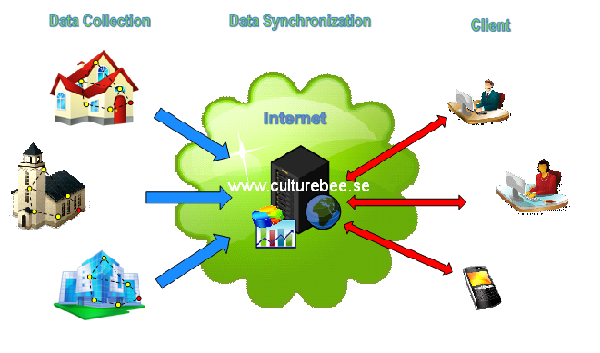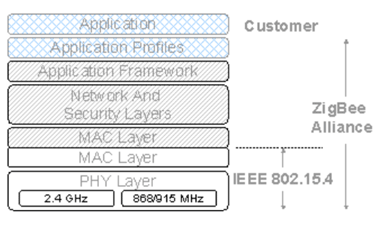Frequently asked questions
Choose a question from the list below or scroll down to see all questions and answers.
What is CultureBee?
What is ZigBee?
What is unique with CultureBee?
Why is CultureBee needed?
Who developed the CultureBee system?
Who can use the CultureBee system?
What is CultureBee?
CultureBee is the name of our own-developed remote sensing and monitoring system for the purpose of preserving cultural heritage and historically valuable buildings. The overall CultureBee system is illustrated below. CultureBee utilizes the ZigBee standard for local wireless sensor networking which can also be remotely monitored as a webpage via the Internet. It is a two-way and real-time system for both monitoring and control purposes. A battery in a sensor node can last up to 10 years.

What is ZigBee?
ZigBee is an internationally accepted standard - www.zigbee.org - for wireless sensor networking. It is based upon the IEEE 802.15.4 specification. The ZigBee standard has the characteristics of large network capacity (up to 65,000 nodes), long battery lifetime, short link establishment time (15-30 ms), but low data rate (up to 250 kbps). The following graph illustrates the ZigBee stack.

What is unique with CultureBee?
CultureBee has a modular design, consisting of local wireless sensor networks deployed in, e.g., churches and museums, and remote display sites via the Internet. Wireless and battery-driven sensors are used for measuring, e.g., temperature and humidity, so no damage will be done to any monitoring object. It is very easy to add new functions and services into the network system, e.g., alarm and control, because of the modular architecture.
Why is CultureBee needed?
Each cultural building is unique. People spend a lot of money every year on maintaining these buildings. However, still many ancient relics like paintings and wooden furniture are damaged due to the fact that there are too many objects to be maintained, which requires a lot of human and financial resources. To use the CultureBee system will significantly reduce the maintenance cost.
Who developed the CultureBee system?
The Communication Electronics research group at Linköping University has developed this remote monitoring and control system, with the financial support provided by Energimyndigheten in Sweden, The project is within the Swedish research program "Spara och Bevara".
Who can use the CultureBee system?
CultureBee is originally developed for monitoring of cultural and historical buildings, but it can also be used for other purposes. For instance, it can be used for environmental monitoring in the residential, agricultural or industrial area.
